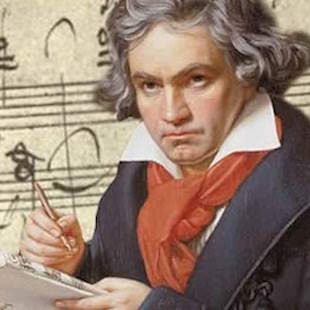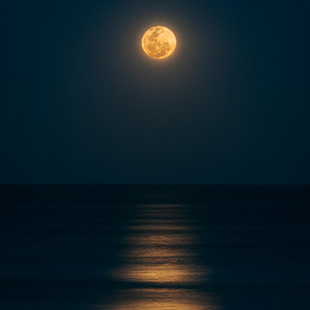Baroque, Romantic, Contemporary: Famous Piano Composers Across the Eras
Take a trip through piano history, from the Baroque right up to the Contemporary period, and learn more about the composers that defined each era.
Last updated on 19 April 2024
A Guide to Baroque, Classical, Romantic and Contemporary Piano
The Classical era may have ended in the early 1800s, but the genre we call "classical music" existed long before that — and still applies to music being composed today. In this article we'll journey through the history of piano music, pausing in each era to meet the most famous composers. We'll also see how shifts in musical styles often paralleled the piano's evolution as an instrument.
Before we embark on this journey, here are a few things to bear in mind:
- The dates aren't exact. There was nobody decreeing "Baroque is over, it's Classical now." Tastes and styles change gradually, so the periods overlap.
- These composers are limited to Western classical music. This is because we're interested in the piano, which didn't travel much until late in this timeline.
- This isn't an exhaustive list. Our goal is just to illustrate how each era was different through some of the most influential composers.
Below you'll get a taste of the vibe and key players of each era. If you'd like some more song recommendations, check out our article listing 14 famous classical piano pieces.
Baroque (1600-1750)
Until this point, the closest instrument to the piano was the organ. Then, the harpsichord was invented in the 1500s and grew to define Baroque piano music. The piano tone you know is created by hammers hitting strings, whereas harpsichord strings are plucked. This means that every note had the same volume, with no sustain.
This precise and crisp tone shaped Baroque music. The period is characterized by independent but harmonizing parts in both hands — a technique referred to as "complex tonal counterpoint” — over a continuous bassline ("basso continuo"). Pieces often opened with a theme that the composer would then explore through variations. This emotionally engaging structure was further developed by Classical and Romantic composers.
Johann Sebastian Bach (1685-1750)
J.S. Bach (not to be confused with the other 50 musicians and composers in his family) was the master of Baroque. His Goldberg Variations are a quintessential example of Baroque theme and variation — complete with a famous aria that beautifully demonstrates Bach's use of counterpoint.
George Frideric Handel (1685-1759)
Handel's music also demonstrates counterpoint and the trademark ornateness of the Baroque period. Uniquely, though, his works combine German and English influences — the former being his native culture. Handel is often praised for his dramatic flair, and it's easy to imagine his decadent pieces playing in royal courts at the time.
Antonio Vivaldi (1678-1741)
Vivaldi was a priest for a brief period, so we see the religious elements of Baroque music at play. His Four Seasons came late in the Baroque period, and you can feel Classical style elements starting to creep in — for example, a more balanced structure and focus on thematic development.
Classical (1750-1820)
This is the Classical era we referred to at the start of this article — not to be confused with the more general classical music genre. During this time, the harpsichord gave way to the fortepiano, which soon became the main keyboard instrument.
Pianists now had much more control over their sound — for example, they could play soft or loud, or sustain notes if they so wished. The possibilities for expression had opened wide up, and the style evolved as a result.
Classical music has a lighter texture than Baroque, generally moving toward clearer melody lines played over chords. It was an era of elegance rather than seriousness.
Wolfgang Amadeus Mozart (1756-1791)
Mozart went from child prodigy to one of the most influential composers of all time in his brief 35 years of life. We have a full article detailing Mozart's best-loved music, from his first composition to his final masterpiece released after his death. But for a piece that perfectly captures Mozart’s style and Classical music overall, here's "Eine kleine Nachtmusik."
Joseph Haydn (1732-1809)
Haydn was an important influence to both Mozart (a friend) and Beethoven (a student). He significantly shaped a number of musical forms during the Classical period — most notably the sonata, symphony and string quartet. In fact, his nicknames include "Father of the Symphony" and "Father of the String Quartet."
His wit and inventiveness infused his music with an expressive, personal flavor that not only shaped the Classical era, but laid the foundation for the Romantic period that came after.
Ludwig van Beethoven (1770-1827)
Beethoven is so prolific and innovative that his music is often split into three periods. In his early period, he mastered the "Viennese" style of Mozart and Haydn but brought more expression and scale to his compositions.
During his middle period, Beethoven was at the forefront of pushing Classical music into the Romantic era, moving from the rigid Classical structures to something more expressive. His "Moonlight Sonata" is the perfect example as it was published in 1801, marking the start of the next era.
Romantic (1800-early 1900s)
The industrial revolution brought with it the modern piano that you know. The expanded 88-key range and powerful sustained tone allowed for the expression and emotion of Romantic music. While the Baroque and Classical eras focused on specific musical forms, with defined structures, Romantic music was more about conveying a feeling.
More freedom meant new types of pieces — nocturnes, fantasias and preludes — that weren't afraid of using dissonances or progressive textures. More travel meant that composers were no longer limited to royal courts or well-established schools of music. Influences from around the world started to creep in, and composers began using music to paint pictures of countries — their own or abroad.
Franz Schubert (1797-1828)
Like Beethoven, Schubert straddled the Classical and Romantic eras. In his works you can witness the shift from the Classical formality and structural clarity in, for example, "The Trout," which he composed at just 22…
…to the deeply Romantic, emotionally expressive style of the sonata below, which he wrote during his final months.
Frédéric Chopin (1810-1849)
Chopin wasn't just a virtuoso pianist and composer. He was probably one of music's earliest celebrities, complete with a high-profile love life and a mysterious persona: He only performed in public around thirty times during his lifetime.
We've gathered our favorite Chopin works in a separate article, but the nocturne below nicely illustrates Chopin's talent for opening up the expressive possibilities of the piano.
Johannes Brahms (1833-1897)
Brahms struck a beautiful balance between tradition and innovation, blending the meticulous style of Classical-era music with the deep emotions of the Romantic. He rejected the opulence of other Romantic composers and strongly believed that music could stand on its own, with no need for any external narrative.
The result was something abstract yet emotionally rich — what many called "pure music."
Pyotr Ilyich Tchaikovsky (1840-1893)
Speaking of opulent Romantic composers… Tchaikovsky represents the grandiosity of the period very well. His music was majestic, mystical and with a nationalist view of his native Russia, transcending the stereotypes of Russian and Western music at the time.
Intensely emotional, story-driven, and with an unforgettable melody, the "Swan Theme" is Tchaikovsky at his finest.
20th Century and Contemporary (early 1900s-2000)
Around this time, the piano started showing up in other genres: blues, jazz and musical theater at first, sowing the seeds for rock, pop and electronic music to come. Classical piano music was still important, but faced with the rise in recorded music and genres from around the world, composers were branching out. Some — like George Gershwin — even composed both popular and classical music.
All this made the early 20th century a jumble of subgenres, from impressionism to postromanticism to expressionism. And more styles came after WWII, like neoromanticism, experimentalism and minimalism. You can discover the details on your own, but for now it's enough to know that this was an era where piano music took on many lives.
Claude Debussy (1862-1918)
Debussy took the freedom and expression of romanticism even further, creating what he called "symphonic sketches." He's widely considered as the first impressionist composer — even though he rejected the term. Just listen to the strange yet evocative "Clair de Lune" to hear how he developed his own style of harmony and musical color.
Erik Satie (1866-1925)
The end of romanticism was all about experimentation, and Satie was definitely an inventor. Eccentric in the best possible way, he preferred to call himself a phonometrician (someone who measures sounds) rather than a musician and invented the term Gymnopédie for his most well-loved series of pieces.
Sergei Prokofiev (1891-1953)
Like many other Russian composers, Prokofiev put a lot of his homeland into his music, despite spending most of his life in the US and Europe. Listen to his piece "Historiette" to hear these influences combine — as well as how he used dissonance and clashes to evoke emotion.
This is not the end by any means. Classical piano music lives on. We rely on it to convey emotion in film and television scores, like the mystical "Hedwig's Theme" from Harry Potter or the epic main theme of Game of Thrones.
And it propels us forward in video games like Tetris, Super Mario, and Zelda — just to name a few. If you're eager to discover more contemporary classical music, our article about video game music on piano is a great place to start!
Read next
4 Easy Chords to Learn New Piano Songs Quickly
Chords are the building blocks of music: Learn to master them and you'll be able to learn new songs even faster. Here's how.
10 Easy Piano Songs for Beginners
You don't need tons of practice to play piano songs that you love. Here’s our selection of easy-to-play pieces for beginners, plus a few key tips to set you up for success.
10 Slow and Beautiful Piano Songs to Put You in a Calm Mood
We round up some of our favorite piano songs from composers like Mozart, Frédéric Chopin and Amy Beach to help you bring more beauty — and peace — into your life.
The 14 Classical Piano Pieces Every Musician Should Know
With centuries of history behind it, classical music deserves a spot on every pianist's playlist. Here are some of the most famous piano pieces from Baroque to Romantic.















